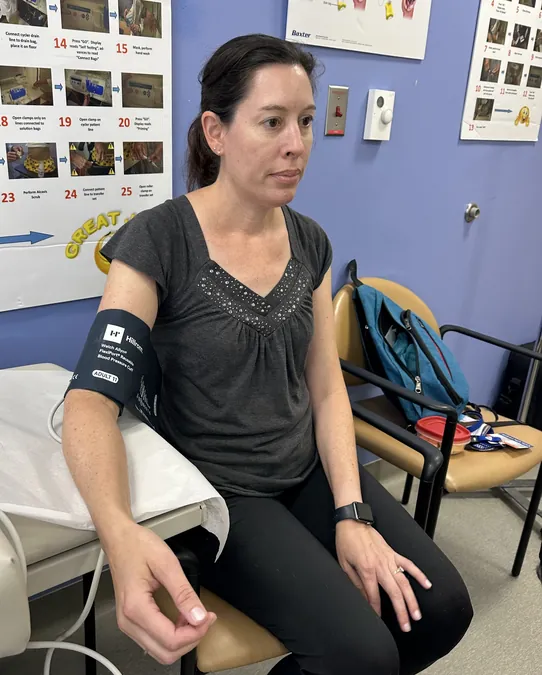
Arm Position Can Dramatically Skew Blood Pressure Readings, New Research Warns
2024-10-07
Author: Emma
A groundbreaking study from Johns Hopkins Medicine reveals that the positions commonly used during blood pressure (BP) screenings can severely inflate test results, leading to potential misdiagnosis of hypertension.
Published on October 7 in JAMA Internal Medicine, the research scrutinizes the impact of three different arm placements: an arm resting on a desk, an arm supported on a lap, and an unsupported arm hanging alongside the body. The findings are eye-opening: placing the arm on the lap can increase systolic pressure (the upper number in a BP reading) by nearly 4 mmHg, while an unsupported arm can inflate readings by almost 7 mmHg.
Dr. Tammy Brady, the study’s lead author and a prominent figure at Johns Hopkins, emphasizes that the positioning of the arm is crucial for obtaining accurate blood pressure measurements. This study underscores the necessity for following clinical guidelines that recommend firm support for the arm during these measurements.
High blood pressure affects nearly half of U.S. adults, a condition defined by blood force exceeding the normal average of 120/80. Without treatment, hypertension significantly raises the risk for dire health events such as strokes and heart attacks. This makes regular screening — often the first line of defense against hypertension — vital for early intervention.
The American Heart Association has laid out clear guidelines for accurate blood pressure measurement, which include using the correct cuff size, ensuring back support, keeping feet flat on the floor and legs uncrossed, and maintaining the arm at heart level on a solid surface. However, this study highlights a frequent deviation from these practices, where patients are positioned on an examination table without proper arm support.
In an effort to quantify the issue, researchers included 133 adult participants in the study, which ran from August 2022 to June 2023. Participants—predominantly African American and comprising diverse age groups—were randomly assigned to one of six groups representing various arm positions. Detailed protocols ensured a realistic clinical setting, including a brief walking period and a rest before measurements.
Measurements taken during the study indicated that BP readings with commonly employed arm placements, like resting on the lap or hanging unsupported, were significantly higher than the ideal supportive position on a desk. In essence, this could shift a blood pressure reading from the normal range to potentially classifying individuals as having stage 2 hypertension.
Co-author Sherry Liu warns that differences as small as 6.5 mmHg can create a critical distinction between normal and high blood pressure classifications, which is alarming when patients and cardiologists often rely on these metrics for diagnosis and treatment.
While cautioning that these findings may be restricted to automated BP readings, the researchers urge clinicians to strictly adhere to best practice guidelines. Furthermore, Brady stresses the importance of patients actively advocating for their health, particularly regarding BP measurements both in medical settings and at home.
As the conversation around hypertension management continues to evolve, this study serves as a wake-up call for health professionals and patients alike—ensuring accuracy in blood pressure readings could save lives.









 Brasil (PT)
Brasil (PT)
 Canada (EN)
Canada (EN)
 Chile (ES)
Chile (ES)
 España (ES)
España (ES)
 France (FR)
France (FR)
 Hong Kong (EN)
Hong Kong (EN)
 Italia (IT)
Italia (IT)
 日本 (JA)
日本 (JA)
 Magyarország (HU)
Magyarország (HU)
 Norge (NO)
Norge (NO)
 Polska (PL)
Polska (PL)
 Schweiz (DE)
Schweiz (DE)
 Singapore (EN)
Singapore (EN)
 Sverige (SV)
Sverige (SV)
 Suomi (FI)
Suomi (FI)
 Türkiye (TR)
Türkiye (TR)